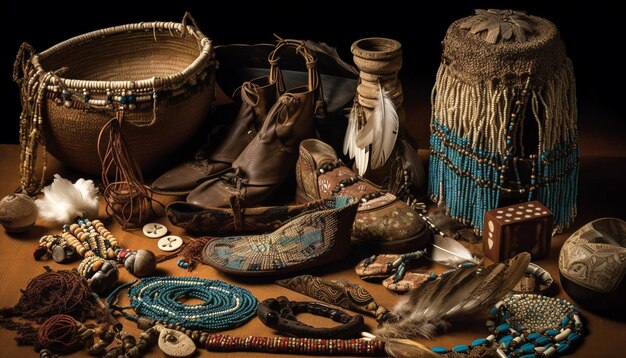The allure of antiquità—an Italian term that translates to “antiquity” in English—spans across centuries, capturing the fascination of historians, collectors, and art enthusiasts alike. From the remnants of ancient civilizations to contemporary collectible artifacts, the evolution of antiquità offers a captivating journey through history and culture. This article explores how the value and significance of ancient artifacts have transformed over time, shaping modern appreciation and collection practices.
Understanding Antiquità: The Foundation of Ancient History
Antiquità encompasses a wide range of artifacts, monuments, and relics from ancient civilizations. These include:
- Ancient Ruins: Structures and remnants from civilizations such as the Romans, Greeks, Egyptians, and Mesopotamians. Examples include the Colosseum in Rome, the Parthenon in Athens, and the Pyramids of Giza.
- Artifacts: Items such as pottery, jewelry, sculptures, and tools that provide insight into daily life and artistic achievements of ancient cultures.
- Manuscripts and Documents: Written records and scrolls that offer a glimpse into the intellectual and literary traditions of ancient societies.
These ancient elements are crucial for understanding historical contexts, societal developments, and cultural practices of past civilizations.
The Transition from Ancient Remnants to Collectibles
As time progressed, the perception and value of antiquità began to shift. Several factors contributed to this transformation:
Historical Significance: Ancient artifacts and ruins were initially valued for their historical importance. Archaeologists and historians dedicated their efforts to uncovering and preserving these remnants to better understand ancient societies.
Cultural Appreciation: Over time, antiquità began to be appreciated not only for its historical value but also for its artistic and cultural significance. Collectors and art enthusiasts started to recognize the intrinsic beauty and craftsmanship of ancient artifacts.
Economic Value: With increased appreciation, antiquità also gained economic value. Rare and well-preserved artifacts became highly sought after in the art market, leading to significant investments and auctions. Collecting ancient items became a symbol of status and sophistication.
Educational and Research Value: Museums and educational institutions play a crucial role in the preservation and study of antiquità. Exhibitions and research projects help disseminate knowledge about ancient cultures and their contributions to human history.
The Modern Collectible Market for Antiquità
Today, antiquità continues to capture the imagination of collectors and enthusiasts. The modern market for ancient artifacts includes:
Private Collectors: Individuals who invest in and preserve ancient items for personal enjoyment or investment purposes. These collectors often focus on specific types of artifacts, such as ancient coins, sculptures, or manuscripts.
Auction Houses: Reputable auction houses hold sales of rare and valuable antiquità. These auctions attract global bidders and often feature high-profile items with historical and artistic significance.
Museums and Galleries: Institutions dedicated to showcasing and preserving antiquità. They offer educational programs and exhibitions that highlight the importance of ancient artifacts and their impact on contemporary culture.
Reproductions and Replicas: In addition to original artifacts, reproductions and replicas allow a broader audience to experience and appreciate ancient art and culture. These items serve as educational tools and enhance public engagement with history.
The Challenges of Collecting and Preserving Antiquità
Collecting and preserving antiquità presents several challenges:
Authenticity: Verifying the authenticity of ancient artifacts is crucial. Counterfeits and forgeries can mislead collectors and researchers, making provenance and expert appraisal essential.
Legal and Ethical Issues: The trade of antiquità is subject to legal and ethical considerations. Issues such as looting, illegal sales, and repatriation of cultural heritage require careful attention to ensure responsible practices.
Preservation: Ancient artifacts require proper care to prevent deterioration. Environmental factors, handling practices, and conservation techniques all play a role in maintaining the integrity of these items.
Cultural Sensitivity: The display and ownership of antiquità often involve cultural and historical sensitivity. Respect for the originating cultures and their heritage is paramount in the collection and presentation of ancient artifacts.
The Future of Antiquità
The future of antiquità involves ongoing advancements in technology and research:
- Digital Preservation: Digital technologies are being used to create detailed records and replicas of ancient artifacts. These digital representations help preserve the items and make them accessible to a global audience.
- Innovative Conservation Techniques: Advances in conservation science offer new methods for preserving and restoring ancient artifacts, ensuring their longevity for future generations.
- Increased Global Collaboration: International cooperation among researchers, collectors, and institutions enhances the preservation and appreciation of antiquità. Collaborative efforts contribute to a more comprehensive understanding of ancient cultures and their legacies.
Conclusion
The evolution of antiquità from ancient ruins to modern collectibles reflects a profound journey through history, art, and culture. As we continue to explore and appreciate these ancient remnants, we gain valuable insights into the past and enrich our understanding of human heritage. Whether through private collections, museum exhibitions, or digital innovations, the significance of antiquità endures, connecting us to the rich tapestry of our shared history.
By recognizing and respecting the value of antiquità, we contribute to the ongoing legacy of these remarkable artifacts and ensure that their stories continue to inspire future generations.







